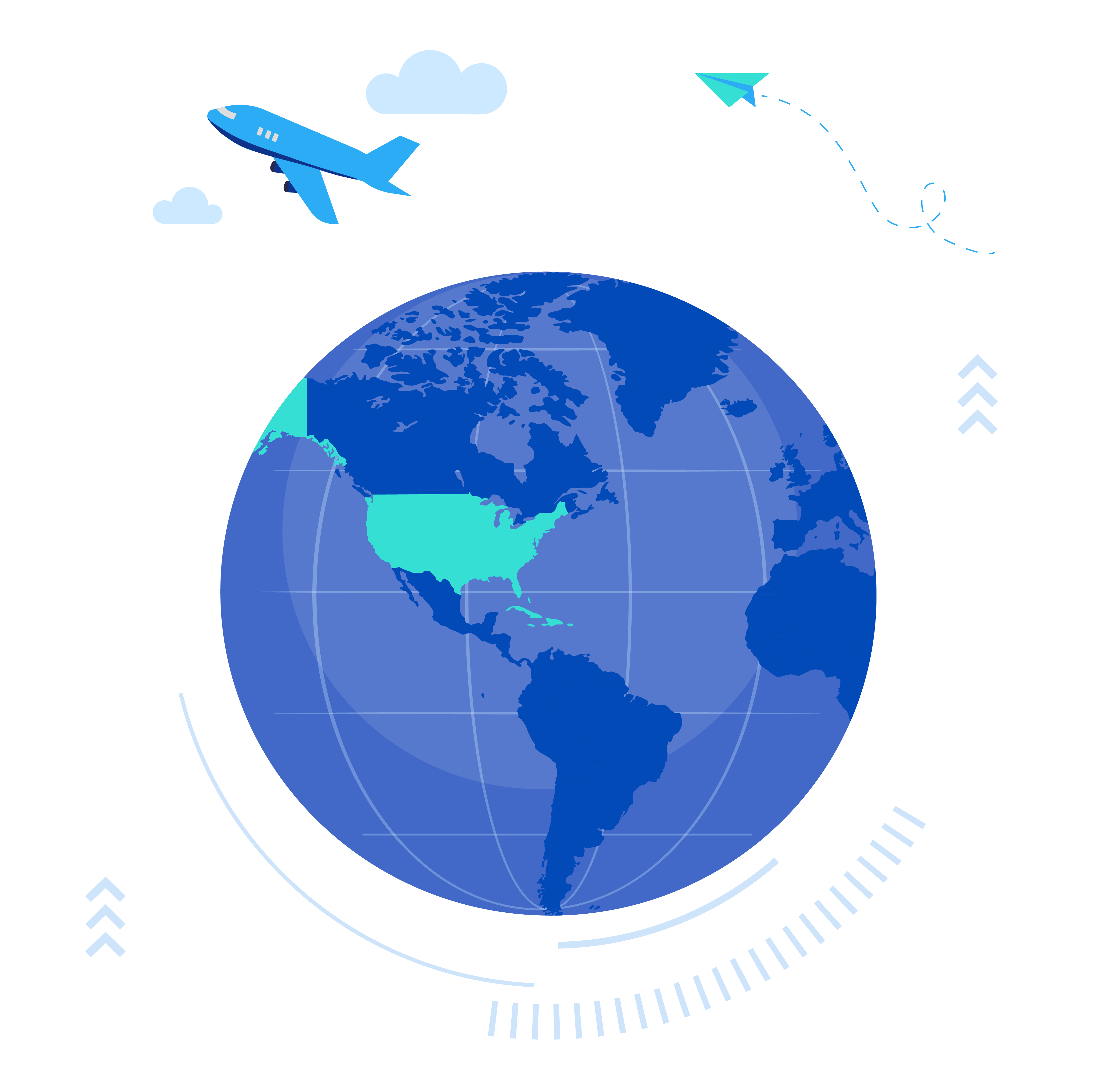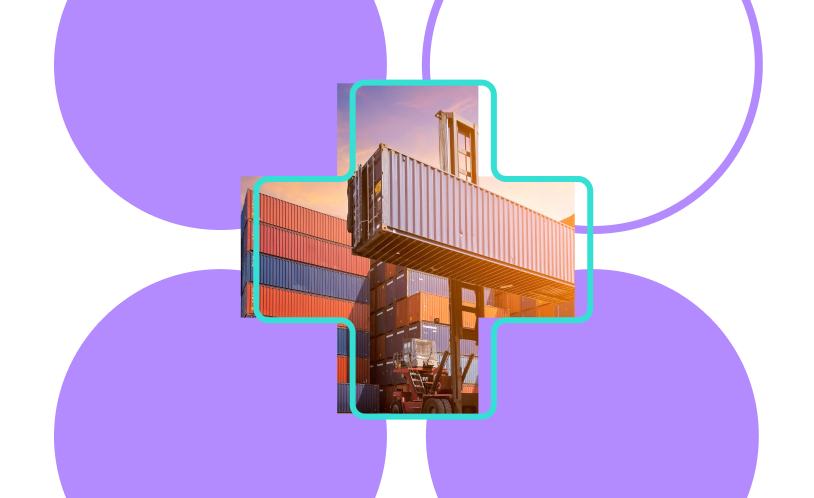Navigating customs can be a daunting task, especially when faced with numerous regulations, compliances, and standards to follow. It’s easy to get lost in a maze of paperwork, fine-print documentation, and ever-changing international trade laws, whether you’re a new shipper or an experienced business.
Understanding the exact customs regulations for your freight is non-negotiable for faster and seamless shipping. Lucky for you, we’ve got your back. No need to waste time poring over lengthy PDFs – we’re here to simplify the US Customs clearance process and make you a customs pro in no time.
We’ve put together a comprehensive US customs guide, covering in detail various types of customs duty, the US customs clearance process, an impartial take on customs brokers, required documents and paperwork before shipping, and things to keep in mind while filing for US Customs.
Please note: This article addresses US Customs Duties and their processes specifically. Procedures and documentation may differ in other countries as per their trade laws.
Simplify Your US Customs Experience
Discover how Clearit can help you navigate the complexities of importing with ease.
Section 1: What are US Customs Duties?
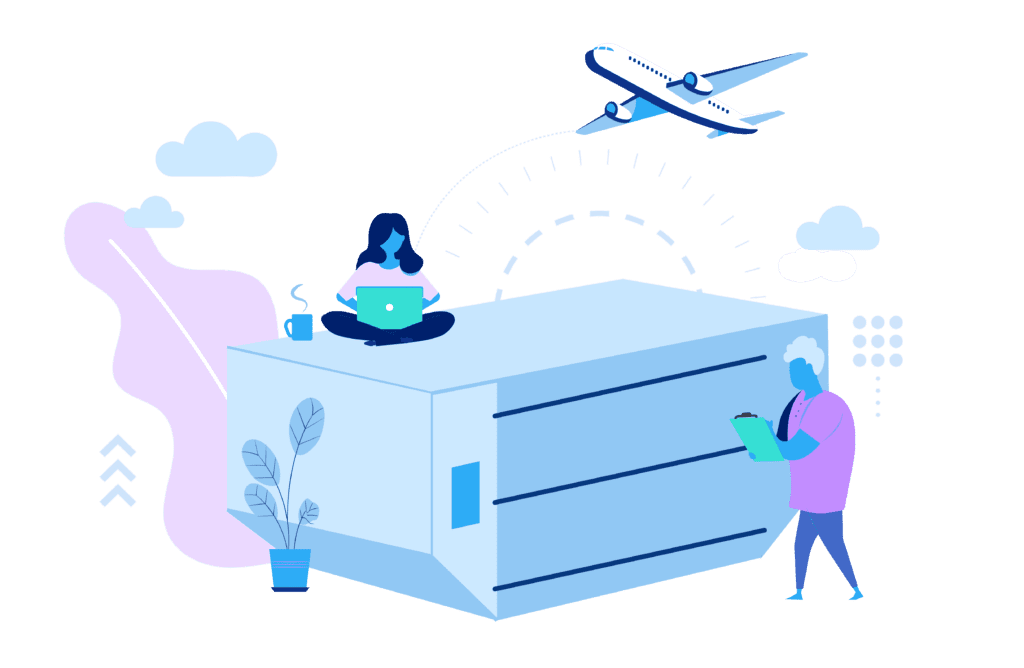
Customs duties are taxes you pay when importing goods across international borders. Countries levy customs duties to protect their domestic markets, generate additional revenue, and monitor the movement of goods across borders.
If you’re importing something into the US, you need to file an entry with US Customs and Border Protection (CBP), informing them that you’re bringing goods into their country.
The customs officer will ask you to disclose basic information such as country of origin, type of goods, HS code, price, weight of the cargo, and freight value. Based on these details, they’ll inform you of the actual customs duties levied on your shipment.
As we embark on our journey through the complexities of US customs, let’s start with the basics, understanding what US Customs Duties are and why they’re critical for importers.
Types of Customs Duties
Customs duties and entry requirements vary depending on the shipment’s value as follows:
| Type of Duty | Freight Value | Description |
|---|---|---|
| Formal Customs Duties | Over $2,500 | Shipments over $2,500 must undergo a formal entry process with CBP, requiring a customs bond and a detailed clearance process. |
| Informal Customs Duties | $800 to $2,500 | Shipments valued between $800 and $2,500 generally have a simpler clearance process. A customs bond may still be required for certain goods; requirements vary. |
| Section 321 (De Minimis) | Under $800 | Shipments under $800 qualify for duty-free entry under the De Minimis rule, with no customs bond or duties required, streamlining the clearance process. |
Harmonized System Code (HS Code)
While the value of shipments plays a significant role in determining customs duties, the product’s HS code is also a critical factor. The HS code facilitates global trade by standardizing the classification of goods through unified categories. Each product is assigned an HS Code, simplifying the identification process and helping customs authorities determine applicable duties and fees.
In addition to the standard customs duties determined by the HS code, it’s essential to be aware of the USTR Section 301 duties. Many products imported from China are subject to these additional duties, which range from 7.5% to 25%. The Section 301 duties were implemented in response to trade practices deemed unfair, affecting a wide range of goods. Importers should carefully check if their products fall under these categories, as it significantly impacts the total cost of importing goods from China.
Variation in Customs Duties
When importing goods into the U.S., customs duties are calculated based on the type of goods and their declared value. However, there are specific situations where additional duties may apply, particularly anti-dumping (AD) and countervailing duties (CVD). These measures are designed to protect U.S. industries from unfair trade practices.
- Anti-Dumping (AD) Duties are imposed on goods imported at a price lower than their normal value, typically the price in the exporter’s domestic market. This practice, known as dumping, can undercut local businesses by flooding the market with cheaper products.
- Countervailing Duties (CVD) target goods that receive government subsidies in the producing country, allowing them to be sold at artificially low prices on international markets. These subsidies can distort fair competition and harm domestic industries in the importing country.
Both AD and CVD are applied after a thorough investigation by the U.S. Department of Commerce and the International Trade Commission. They determine if dumping or unfair subsidies have occurred and if they cause injury to the U.S. industry. Only specific commodities identified within these investigations are subject to AD/CVD.
For instance, if handbags imported from China are sold in the U.S. at prices significantly lower than their fair market value, potentially harming domestic producers, an investigation may be initiated. If it’s determined that these handbags are dumped or subsidized, AD or CVD will be levied to level the playing field for U.S. manufacturers.
It’s vital to stay informed about which products are currently subject to AD/CVD, to accurately assess the total cost of importing certain goods and comply with U.S. trade regulations.
Having grasped the essentials of customs duties, the next crucial step involves diving into the paperwork and documents necessary for a smooth customs clearance process.
Section 2: Paperwork and Documents
The entire US customs clearance process mainly involves proper documentation and timely paperwork. Your documents contain all the details about your shipment, such as type of freight, value, country of origin, weight, and HS Code, among others.
Even though a freight forwarder typically handles the logistics and coordination of shipping, being familiar with the basic paperwork and common documents is essential for smoothly navigating U.S. customs regulations. It’s important to note that the commercial invoice and packing list which are critical for customs clearance, are provided by your vendor. These documents, along with others required by customs, help ensure your goods are cleared without delays. Key documents include:
1. Commercial Invoice
Every shipment comes with a commercial invoice signed by the shipper or seller. You cannot ship your freight without this document. Your invoice has all the necessary details related to the shipment as required by the Tariff Act in the US.
List of Items to Check Off Your Commercial Invoice
- Exporter/Shipper’s Name and Address: Full contact details of the party sending the goods. This is typically the seller but can also be a third party acting on behalf of the seller.
- Seller’s Name and Address (if different from Exporter/Shipper): Full contact details of the actual seller of the goods, if different from the exporter/shipper. This distinction is crucial in transactions where the seller is not directly shipping the goods, and a third party (such as a trading company or an intermediary) is involved in the export process.
- Consignee’s Name and Address: Full contact details of the party receiving the goods in the U.S.
- Buyer’s Name and Address (if different from Consignee): When the buyer is not the consignee.
- Invoice Number: Unique identifier for the transaction.
- Date of Shipment: When the goods were shipped/exported.
- Country of Origin: The country where the goods were produced or manufactured.
- Detailed Description of Goods: Including material composition, intended use, grades, quality, and, if applicable, part numbers.
- Quantity of Goods: Number of items, units, or volume.
- Weight and Measurements of Goods: Both net and gross weights, and measurements (where applicable).
- Value of Goods: The transaction value of the goods, including the method used to determine the value if the transaction value is not available.
- Total Invoice Value: Sum total of all items on the invoice, including all applicable charges such as freight, insurance, and packing costs.
- Currency in Which Transactions are Done: Important for accurate duty and tax calculation.
- Terms of Sale (Incoterms): Delivery terms such as FOB, CIF, etc., which define the responsibilities of the buyer and seller.
- HS Code (Harmonized System Code): The international nomenclature for the classification of products, which determines the tariff/duty rate of the goods.
- Shipping Terms: Information about the mode of transport and the name of the carrier.
- EIN (Employer Identification Number) or SSN (Social Security Number): Tax identification number of the U.S. consignee/buyer.
- Origin of Shipment and Port of Entry: Essential for customs to determine applicable duties and compliance with import regulations.
- All Charges Incurred: Including insurance, freight, packing, etc., necessary for determining the transaction value of the goods for customs purposes.
- Packing List Reference: If applicable, reference to the accompanying packing list.
- Declaration by the Exporter: A statement certifying that the invoice details are true and correct, signed by the exporter or their agent.
Your invoice must be in English or accompanied by an English translation. Each shipment also requires a separate invoice. However, assembled shipments or different installments of one shipment may be included on a single invoice. Always double-check your details on the commercial invoice to ensure they match your ID Card.
2. Bill of Lading
A bill of lading (BoL) is a document of receipt provided to shippers by the forwarder or vessel operator. It serves as a contract for transportation of freight and acts as evidence of the right to make an entry into the US (as required by CBP). It is also called BoL, B/L, or more commonly, Waybill.
The importer must submit the BoL while filing an entry with the CBP. For shipments arriving by air, an air waybill (AWB) may be used.
3. ISF Filing
Importers or their assigned brokers must also submit this form to the CBP at least 24 hours before the cargo is loaded on the vessel. It includes important details related to the freight. CBP uses it to determine whether the cargo needs further inspection on arrival. You can download it from the CBP website.
4. Arrival Notice
When your goods arrive at the port, the carrier issues an arrival notice to the consignee, the notify party, or directly to your customs broker. This notice is crucial as it informs them that your goods are ready for the next steps in the customs clearance process. It includes details about the shipment and its location, enabling your customs broker to arrange for the release and further transport of the goods within the US.
For customs clearance, all entry documents must be filed through the Automated Broker Interface (ABI) within the Automated Commercial Environment (ACE). ACE is the system used by CBP to track and process goods imported into the US, facilitating efficient communication between CBP and the trade community.
5. Other Special Documents
Depending on the type of goods you are importing, you may need to file some additional documents, such as:
- Approval forms from Partner Government Agencies (PGAs) such as FDA (for food items), USDA (for agriculture products), CPSC (for hazardous equipment or chemicals), etc.
- Importer Security Filing (ISF 10+2) is to be filed 24 hours before goods are laden aboard the vessel.
- Power of attorney if you’re seeking the services of a broker. This gives the broker the right to facilitate the customs clearance process on your behalf.
Also, note that all entry documents have to be filed with CBP within 15 calendar days from the arrival of the shipment. Here’s a more detailed overview of the US import process by CBP.
With a clear understanding of the required documentation, let’s explore the pivotal role of customs brokers in navigating the intricate customs clearance landscape.
Streamline Your Customs Paperwork
Let our experienced customs brokers handle the documentation, so you can focus on your business.
Section 3: Do I Need a Customs Broker?
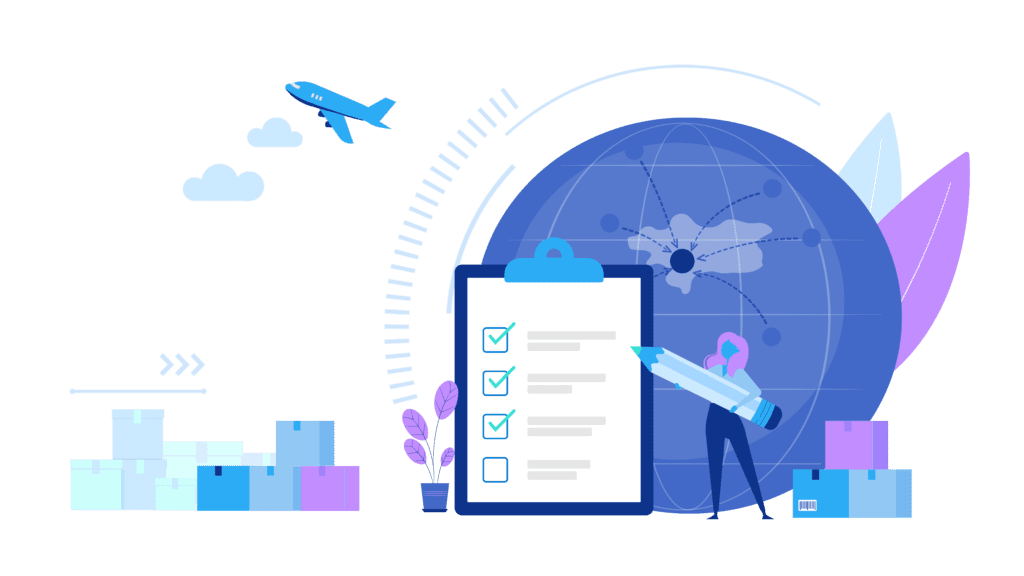
By now, you’ve probably understood the basics of the US customs clearance process, but there’s much more involved. Managing the necessary paperwork reveals the complexity beneath the surface.
Incomplete or incorrect documentation can be a one-way ticket to customs delays and headaches. If the thought of tackling all these documents makes you want to hide under your desk, it’s time to call in the cavalry – a customs broker. Trust us, it’s a game-changer.
You can compare working with a customs broker to working with an accountant to file your taxes. While it is not a requirement, the small fee you would pay to a broker to ensure compliance is well worth the comfort it provides, as misdeclaring cargo can lead to costly additional fees and penalties.
Who is a Customs Broker?
A customs broker is someone who arranges the entire customs clearance process for you. They handle the necessary paperwork, ensure goods are properly declared, and verify that all import activities are legal and in order. Essentially, CBP-certified customs brokers are experts in managing the documentation needed for smooth US customs clearance.
They also help in:
- Correct classification of goods
- Liaising with partner agencies
- Helping with correct licensing
- Preparing and submitting documents
- Arranging secure payments of duties
- Facilitating the timely release of your cargo
Here’s why you should consider a licensed customs broker for your shipping requirements.
Pros of Hiring a Customs Broker
- Avoiding the hassles of learning and executing the US customs clearance process
- Communicating with a single entity instead of various government agencies
- Reducing the chances of errors in paperwork, thus avoiding any extra costs
- Lowering your risk and responsibility related to customs, documentation, and international trading laws
- Hiring a broker on an ad-hoc basis without incurring extra costs for a full-time employee
Should I Hire a Customs Broker?
Legally you are not required to. Hiring a broker will likely save you significant time, money, and resources while avoiding all the hassle that comes with US customs requirements for imports.
At Freightos.com, we allow you to book brokerage right through the platform, making the whole customs process easier, smoother, and faster for you.
Now that we’ve covered the importance of customs brokers, it’s time to demystify the various import fees you might encounter, further clarifying the financial aspects of importing.
Section 4: What are Import Fees?

When shippers discuss paying for customs, they refer to various types of charges paid to customs, government regulatory bodies, and other intermediaries.
The actual charges and customs duties you pay are specific to your shipment, type of goods, services opted for, and other circumstances. Here are some of the most common types of customs duties and charges you may end up paying.
We have divided these charges into four categories for better understanding:
- Clearance Charges
- Duties or Tariffs
- Customs Exam Fee
- Penalties
You may incur any or all of these charges, depending on your shipment.
1. Clearance Charges
Apart from the actual taxes you pay on the goods, you incur these charges for clearing customs. Some of these charges may be paid to CBP, partner government agencies, forwarders, or 3PL agents like brokers.
Common types of customs clearance charges include:
- Merchandise Processing Fee (MPF): Collected on most shipments at about 0.34% of shipment value in the US. A minimum of $27.23 and a maximum of $528.33 is charged, not including customs duty, freight, and insurance charges.
- Harbor Maintenance Fee (HMF): Collected on all ocean freight at 0.125% of the shipment value.
- Importer Security Filing (ISF): Required for all ocean shipments.
- Customs Broker Fee: Applicable if you choose to use a broker, varying based on the range of services provided, including handling paperwork and legalities.
- Partner Government Agencies’ Fees: Charged when you file for approvals in case of special goods.
You can calculate all these clearance charges in advance by providing relevant information about your shipment, or you can use our free US Import Duty Calculator.
Customs Bonds
You may also have to get a customs bond, another type of customs clearance charge if you’re shipping:
- General merchandise with a value of more than $800, or
- Goods subject to restrictions by regulatory government agencies, like the FDA, EPA, etc.
A customs bond is an insurance policy for Customs and Border Protection (CBP) required against most shipments. Shippers have to pay bond premiums to CBP as an assurance of timely payment.
It serves as a safety net in the unlikely event that a shipper cannot pay the taxes and duties owed. You can opt for two types of customs bonds: Single Entry Bond or Continuous Entry Bond.
Single Entry Bond
This bond is valid only for the shipment mentioned, moving through the specified port. The cost of a single-entry bond is based on your cargo’s value, with a minimum value of $100. The bond amount equals the full value of the goods, excluding duties, taxes, and fees.
Continuous Entry Bond
If you ship more than 3-4 times a year, it’s best to opt for a continuous bond. The amount for procuring a continuous entry bond is based on 10% of duties, taxes, and fees paid in the previous year by the importer. The bond amount is rounded to the nearest $10,000 up to $100,000, followed by increments of $100,000 thereafter.
For example, if the fee paid is $51,987, the bond amount will be $60,000. If the fee is $126,073, the bond amount will be $200,000. This bond is valid for 1 year and covers all shipments moving through multiple ports. The most common bond amount for continuous entry bonds is $50,000.
Sometimes, shippers opt for a continuous entry bond even when having single shipments, especially when the value of the shipment is too high. The reason is that a single-entry bond is equal to the full value of the shipment, which can be more expensive compared to a continuous-entry bond.
2. Customs Duties
These are the actual taxes levied by the government on the goods you’re importing. You do not owe customs duties on all types of shipments, but for some, the charges may be as high as 30% of your total shipment value.
The duties owed to customs depend on the HS classification of the goods and the country of origin. Trade agreements between the origin and destination country, such as free trade, CEPA, or preferential trade, may result in nil or low customs duties. Some categories of goods, like alcohol, are also subject to extra taxes as per US customs requirements for imports.
Unlike clearance charges, you can’t get exact estimates of duties in advance. However, you can use duty calculators or speak to experienced suppliers to get a ballpark figure.
Try our customs duty calculator to estimate your shipping costs at Freightos.com.
3. Customs Exams or Inspection Fees
Ideally, you won’t have to pay this type of customs cost. Customs agents might inspect your cargo if they suspect improper documentation or as part of random screening though this is uncommon, affecting only 3-5% of shipments.
All types of shipments, whether FCL, LCL, or air, can be taken for inspection. The charges incurred by Customs authorities during an inspection are passed on to the shipper.
For example, an X-ray of a container may cost you about $300. In the case of intensive exams that require the opening of containers, the cost can bump up to $1,000 or more. The fee generally includes the cost of inspection (equipment and manpower used) along with the transport and storage of the shipment for the duration of the inspection.
You can’t do much once your shipment is taken for examination, and there’s no way to avoid these charges. Neither the forwarder nor the broker knows how long the process will take. However, you should not overlook the costs involved.
To avoid such a scenario, always work with trusted partners, have proper paperwork and documentation, and follow all legalities while shipping.
4. Penalties
To clear your shipment, you must adhere to numerous US customs regulations. Any errors or non-compliance can result in significant costs.
For example, if you fail to file ISF on time, fines can add up to $6,000. If you’ve applied the wrong HS code, you can be penalized heavily. These added costs can be avoided by working with experienced forwarders and brokers.
Armed with knowledge about potential fees, we move forward to the critical process of filing for US customs, where accuracy and attention to detail are paramount.
Calculate Your Import Costs with Confidence
Use our import duty calculator and other tools to accurately estimate and manage your expenses.
Section 5: US Customs Filing: Important Details
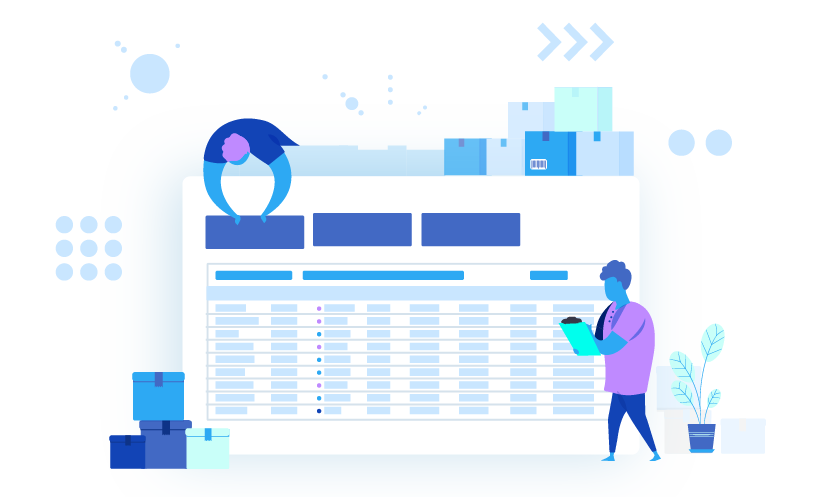
Filing a customs entry is like navigating a minefield of documents – one wrong step, and boom! Errors galore. While partnering with top-rated brokers and forwarders will help you avoid these pitfalls, it’s still crucial to keep a sharp eye on the important elements of US customs guidelines. Don’t worry; we’ll walk you through it.
1. Misclassifying the Goods
Using the incorrect HS code and misclassifying goods can result in significant punitive duties.
- Harmonized Tariff Schedule (HTS) is a system used by the US to fix tariff rates against different categories of goods.
- The HS code thus denotes the category of goods being imported and is used to determine the taxes levied on that category.
- The supplier includes the HS code on the commercial invoice and all other entry documents. It’s best to confirm the HS code with your broker by providing them with a thorough description of your goods.
2. Overlooking AD & CVD Compliance
Overlooking AD & CVD Compliance: Anti-Dumping (AD) and Countervailing Duties (CVD) are imposed on goods sold below their market value in the US, a measure to protect domestic industries from unfair competition. Since anti-dumping rules frequently change, it’s advisable to consult your broker for current regulations and estimates. Tariffs are typically calculated based on the dumping margin, the difference between the goods’ normal value and their export price. For example, if the normal value of goods is $3,000 but the export value is $1,000, the AD/CVD would be $2,000.
3. Partner Government Agencies (PGA) Compliance
Make sure you assess the licensing requirements for your goods from relevant partner agencies like FDA, USDA, etc. Check with your broker to get all approvals and licenses required for entry of goods into the US. Filing for approvals and getting licenses takes significant time and money.
4. Intellectual Property Rights (IPR)
CBP seized over 27,000 shipments valued at $3.3 billion for IPR violations in 2021, highlighting the importance of IPR compliance.
You need licenses to import any goods with registered trademarks or copyrights into the US. Work with your broker to check if your goods are in any violation of the intellectual property laws in the US. For example, if you are importing customized t-shirts for a company, you must provide the supplier with a license to use their logo. If found in violation, customs can seize your goods and levy hefty fines. You will bear the costs in case the goods are returned or even destroyed.
5. Improper Labeling and Packaging
Proper labeling and packaging are crucial for transporting goods across US borders. Labeling requirements vary by the type of goods imported, with labels ideally in English, including essential product and shipper information. Packaging also involves palletization, with US customs accepting only plastic or heat-treated wooden pallets. A fumigation certificate, usually provided by the supplier, is necessary for customs clearance. This certificate can also be requested as an additional service from your freight forwarder.
LEARN MORE: Shipping Private-Label Products
6. Misplacing or Mishandling Records
Import documents are crucial and may be needed even after transportation is complete. It’s recommended to keep your import documents for several years post-shipment. CBP may request these documents for re-verification at any time and may impose fines for non-compliance. Specifically, for goods subject to countervailing and antidumping duties, retain the documents for at least five years. These documents are also useful for comparing charges and duties on future shipments. For instance, if you were charged higher duties due to an incorrect HS code, reclassification might help avoid future penalties.
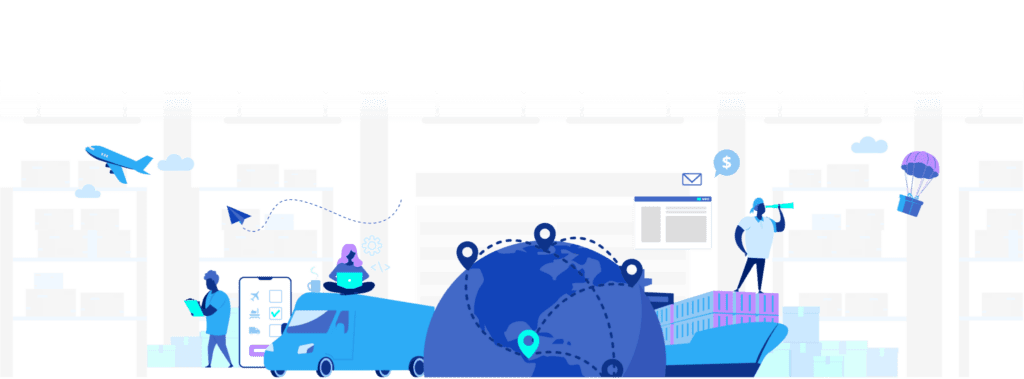
High-Tech, High-Specs: Navigating Electronics Imports from Germany
Imagine you’re importing a batch of high-end electronics from Germany, valued at over $10,000. These goods fall under a specific HS code that attracts a 2.5% customs duty rate due to a trade agreement between the US and the EU. However, because of their high value, you’re also required to secure a continuous entry bond. Additionally, since electronics are subject to FCC regulations, you’ll need to ensure compliance with these rules and possibly submit additional documentation. This example illustrates the importance of understanding not just the basic customs duties but also the impact of trade agreements and regulatory compliance on your import process.
From Farm to Cup: The Journey of Organic Coffee from Colombia
Let’s say you’re importing organic coffee beans from Colombia, with a shipment value of $2,000. Under the US-Colombia Trade Promotion Agreement, your coffee may qualify for duty-free entry. However, because it’s an agricultural product, you must comply with USDA regulations, including obtaining a phytosanitary certificate from the Colombian authorities. This scenario highlights how trade agreements can benefit importers but also underscores the necessity of adhering to specific regulatory requirements for certain types of goods.
Finally, with all the groundwork laid, let’s walk through the process of booking US customs on Freightos.com, simplifying what we’ve learned into actionable steps.
Section 6: How to Book US Customs on Freightos.com
Freightos.com makes the US customs importing process hassle-free and easy, with the help of trusted partners and brokers.
To book US customs on Freightos.com, start by entering your shipment details on the search page. You’ll then be directed to the ‘Recommended Services’ page, where you can select any required add-on services, including customs brokerage and types of customs bonds. Freightos.com will provide quotes from vetted partners and freight forwarders, detailing all potential customs-related charges (excluding duties) and allowing you to compare options.
Tip: You can also filter the quotes based on price, dates, seller, or origin/destination. There are also pre-made filters such as ‘Best Value’, ‘Cheapest’, ‘Quickest’, and ‘Greenest’.
Please note that the provided quotes are estimates based on the value of goods, and the information you provide. These may change depending on specific circumstances.
Mastering US Customs with Confidence
Congratulations, you’re now a US customs champion! With Freightos.com by your side, you’ve got a powerhouse partner that’s locked and loaded with all the resources and tools you need to make your shipping and customs clearance process a total breeze.
Explore More Resources on Freightos.com
Dive deeper into the world of shipping and customs with our comprehensive guides and articles. Stay ahead of the curve with the latest industry insights and tips from our experts.
Connect with a Customs Broker
Need expert help? Our network of trusted customs brokers is ready to assist you with your specific needs, ensuring your shipments clear customs smoothly and efficiently.
Take the next step towards hassle-free shipping. Get a free quote today and make your customs clearance process smoother and faster. Happy shipping!
Ready to Simplify Your Shipping?
Take the first step towards hassle-free importing with Freightos.com.
